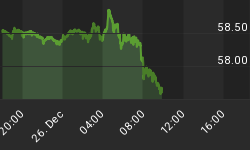Things might look good now for Western housing markets, but some are calling for a painful correction thanks to monetary tightening that’s leading to higher interest rates.
There isn’t a lack of financing, according to AON risk advisory’s Global Terrorism and Political Risk maps recently released for this year, rather the cost of holding debt is getting too high.
Around the world, AON cautions that six housing markets could see a correction: The United States, Canada, Sweden, Norway, the United Kingdom and Australia.
“Although financing is unlikely to dry up in 2018, the main risks stem from tighter macroprudential and monetary policy, which could exacerbate the cost of growing levels of household debt and reduce household consumption, potentially dampening growth,” says the report. “Property price movements also directly affect the market value of households’ assets and indirectly influence households’ cash flows by affecting mortgage payments.”
One might then say AON is a worry monger because interest rates are pretty low in all of these geographies, but that’s not the point. It’s not how low they are, it’s how much they change, and change is definitely in the wind.
U.S. mortgage rates are low by historical comparisons, but they’re climbing. Last week, they hit 4.42 percent for fixed-rate 30-year mortgages, up from 3.95 percent in January. It may seem like a small jump, but for monthly mortgage payments, it’s not—especially at a time when home prices are rising steadily.
Related:Tech Giants Rally Ahead Of Earnings Reports
Trading Economics forecasts U.S. benchmark interest rates to rise from 1.75 percent now to 2 percent in Q2, 2.25 percent in Q4, 2.5 percent in Q1 2019. Beyond that, the forecast is 3 percent in 2020.
In a year-end report on the U.S. housing market, JP Morgan noted that “after robust gains over the past five years, the nationwide nominal house price index is now 40% above its 2012 low-point and 4% above the peak reached in 2006”.

(Click to enlarge)
Why should we care?
Because, according to JPMorgan, “If 2006 was a historic bubble, then current price levels should be looked at more closely.”
Europe is also an interesting study in interest rates, and one might be shocked to learn that Sweden’s is actually negative, -0.50. But the forecast is for a positive 0.50 in 2020, according to Trading Economics. Regardless, that would be a huge shock to home-buyers.
The interest rate in the UK and Norway is about 0.50 percent, while Australia comes in at 1.5 percent. But the forecast for Q2 2018 for the UK is 0.85 percent, 1 percent by Q4 and then 2 percent by 2020.
Norway doesn’t fare much better—0.75 percent in Q3 2018 and 1.5 percent in 2020.
Australia is forecast to see an inflation rate of 1.75 percent in Q4, 2 percent in Q1 2019 and 3 percent in 2020.
But not everyone sees a correction coming. They view healthy economic growth and a strong labor market increasing the risk of inflation and thus leading to more interest rate hikes by the Fed—but they think the housing market is strong enough to adapt.
By Charles Benavidez for Safehaven.com
More Top Reads From Safehaven.com:

















